B.E. - Information Science and Engineering
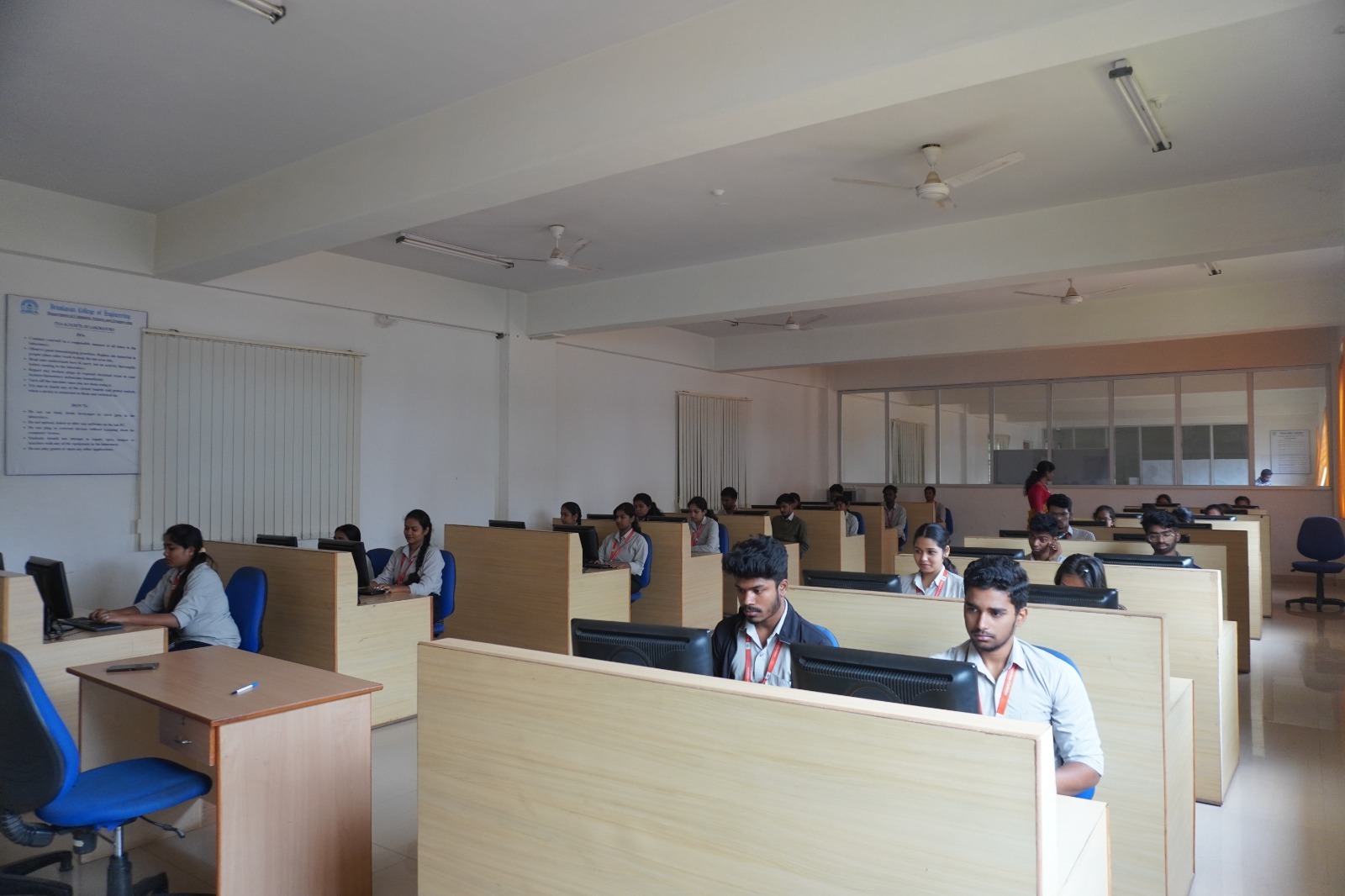
DEPARTMENT OVERVIEW
The department has evolved over the years to portray its excellent academic performance. The department has dedicated and qualified faculties who are responsible to prepare students technically, morally and ethically. Computing facilities in the department provides teaching and research needs for students and faculties . All systems are upgraded to the latest configuration with campus wide internet connectivity.
Regular Technical talks, Seminars and workshops are being conducted for both faculties and students. Internship opportunities are provided for final year and pre-final year students to carry out projects. The department has a prestigious alumni list who are entrepreneurs, have scored very high ranks in public service examinations and CAT exams, secured admission in prestigious institutes of higher studies, as well as holding senior positions in reputed private, government and multinational corporations.
Year of Establishment: 2008
Current Intake: 60
Why Information Science & Engineering?
Information Science is virtually a science of science and combines with so many gradients and domain such as Computer Science, Information Technology, Cognitive Science, and Social Science and so on. Information Science is one of the important and valuable domains for overall Information Infrastructure building. It is primarily concerned with the analysis, collection, classification, manipulation, storage, retrieval, movement, dissemination, and protection of information. It is creating ample opportunities for candidates, improving the different processes and procedures, and further enriching our lives. The majority of career tracks in IT entail design and operational tasks related to computer hardware components, networks and software applications.
Career path proposed through Information Science Engineering
Data Science Engineers
Network Engineers
Software Development Engineers
Advanced Artificial Intelligence
Scope for Higher Studies
VISION AND MISSION
VISION
To create a conducive environment for quality education and to expertise the students in globalized technologies.
MISSION
To provide a conducive academic environment with intellectual capabilities.
To Install skill development in emerging technologies.
To impact professional responsibilities and commitments, ethical standards and social concerns.

Salient Features
Shaping Tomorrow, Today

We have transformed our teaching techniques from black board to hands-on experience and ICT learning. The department is equipped with Wi-Fi enabled laboratories with modern Infrastructures

The department emphasizes practical and project based learning for students. Students are working on real time projects in various domains

Effective use of ICT, faculty are engaged in online classes, sharing study materials etc.

The department promotes students to undertake the intern projects to gain insights of technical domains such as Machine Learning, Natural Language Processing, Wireless Networks, Network Security, Image Processing etc.

Industrial experts have been invited to conduct Hands-On Workshops, Seminars, Skill Development Programs.

Students take up various competitive examinations. Nearly 50% of students have enrolled in GATE examination and have opted for higher studies in different Foreign Universities and IIT’s.

Department conducts Parents Teachers Meeting and has a Student Mentoring System.

Additional tutorials classes are conducted for slow learners.

Expanding learning opportunities through online classes and providing course materials , laboratory programs and videos.

The department fosters student’s participation in National/ International Conferences, Technical Fest, Cultural events, Sports meets and extra-curricular activities.

Students actively participate in University Level Sports Meet, Inter College Fest, Hackathon, National Technical Fest, Awareness Camps etc. while focusing on academics.
POs are statements that describe what students are expected to know and be able to do upon graduating from the program. These relate to the skills, knowledge, analytical ability attitude and behaviour that students acquire through the program.
DEPARTMENT LABORATORIES

Computer Programming Laboratory

Data Structures & OOPs Laboratory

Electronic Circuits & Logic Design Laboratory

Microcontroller and Microprocessor Laboratory

Design and Analysis of Algorithm Laboratory

Computer Networks Laboratory

Database Management System Laboratory

Software Testing Laboratory

Machine Learning Laboratory

Web Technology and Application Laboratory

Mobile Application and Development Laboratory
INFRASTRUCTURE
Realizing the importance of rapid advancements in the Computer Science & Information Technology sectors, all the laboratories have been furnished with high speed LAN. The labs are updated and upgraded frequently as per the requirements and demand of industry. The well-equipped laboratories help students to meet ever increasing technological and social challenges with its traditions of self-discipline, hard work and a creative approach to solve problematic issues.
PROGRAM SPECIFIC OUTCOMES
At the end of the B.E Information Science & Engineering program, students are expected to have developed the following program specific outcomes.
Deep learning of contemporary issues in information Science, Analyze and develop strong technical Skills.
Possess practical competence in a multi-disciplinary environment in the context of changing Technologies.
Discuss the logical solutions through the flowcharts, algorithms and pseudo code.
Explain the syntax, flow of the program and sub problems to obtain the programmatic solutions.
Inseminate Skills for a successful career path for higher studies.
PROGRAM EDUCATIONAL OBJECTIVES
To impart education with clear knowledge of fundamentals with applied aspects of information science and Engineering.
To apply good analytical, design and implementation skills required in solving computational problems.
To inculcate academic ambience, technological competence to build proficiency in interdisciplinary domains.
3rd to 8th Semester BE – Information Science and Engineering Scheme and syllabus Outcome Based Education (OBE) and Choice Based Credit System (CBCS) (Effective from the academic year 2022-23)
ELIGIBILITY




Course Outcomes (CO’s)
| Subject Code | Course Outcomes (CO’s) |
|---|---|
| 21MAT31 | 1. To solve ordinary differential equations using Laplace transform. 2. Demonstrate Fourier series to study the behaviour of periodic functions and their applications in system communications, digital signal processing and field theory. 3. To use Fourier transforms to analyse problems involving continuous-time signals and to apply Z-Transform techniques to solve difference equations 4. To solve mathematical models represented by initial or boundary value problems involving partial differential equations 5. Determine the extremals of functional using calculus of variations and solve problems arising in dynamics of rigid bodies and vibrational analysis. |
| 21CS32 | 1. Identify different data structures and their applications. 2. Apply stack and queues in solving problems. 3. Demonstrate applications of linked lists. 4. Explore the applications of trees and graphs to model and solve the real-world problem. 5. Make use of Hashing techniques and resolve collisions during mapping of key value pairs |
| 21CS33 | 1. Design and analyse application of analogue circuits using photo devices, timer IC, power supply and regulator IC and op-amp. 2. Explain the basic principles of A/D and D/A conversion circuits and develop the same. 3. Simplify digital circuits using Karnaugh Map, and Quine-McCluskey Methods 4. Explain Gates and flip flops and make us design different data processing circuits, registers and counters and compare the types. 5. Develop simple HDL programs |
| 21CS34 | 1. Explain the organization and architecture of computer systems with machine instructions and programs 2. .Analyze the input/output devices communicating with computer system 3.Demonstrate the functions of different types of memory devices 4. Apply different data types on simple arithmetic and logical unit 5. Analyze the functions of basic processing unit, Parallel processing and pipelining |
| 21CSl35 | 1. Use Eclipse/NetBeans IDE to design, develop, debug Java Projects. 2. Analyze the necessity for Object Oriented Programming paradigm over structured programming and become familiar with the fundamental concepts in OOP. 3. Demonstrate the ability to design and develop java programs, analyse, and interpret object oriented data and document results. 4. Apply the concepts of multiprogramming, exception/event handling, and abstraction to develop robust programs. 5. Develop user friendly applications using File I/O and GUI concepts maintain software systems or parts of software systems |
| 21CSL381 | 1. Know the basics of computers and prepare documents, spreadsheets, make small presentations with audio, video and graphs and would be acquainted with the internet. 2. Create, edit, save and print documents with list tables, header, footer, graphic, spellchecker, mail merge and grammar checker 3. Attain the knowledge about spreadsheet with formula, macros spell checker etc. 4. Demonstrate the ability to apply application software in an office environment. 5. Use Google Suite for office data management tasks |
1. COURSE OUTCOME FOR 18 SCHEME
| Subject Code | Course Outcomes (CO’s) |
|---|---|
| 18MAT31 | 1.Use Laplace Transform and Inverse Laplace Transform in solving differential/integral equations arising in network analysis, control systems and other fields of engineering. 2.Demonstrate the Fourier series to study the behaviour of periodic functions and their applications in system communications, digital signal processing and field theory. . 3.Make use of Fourier transform and Z-transform to illustrate discrete/continuous function arising in wave and heat propagation, signals and system. . 4.Solve first and second order ordinary differential equations arising in engineering problems using single step and multistep numerical methods 5.Determine the externals of functional using calculus of variations and solve problems arising in dynamics of rigid bodies and vibrational analysis. |
| 18CS32 | 1.Use different types of data structures, operations and algorithms. . 2.Apply searching and sorting operations on files . . 3.Use stack, Queue, Lists, Trees and Graphs in problem solving . 4.Implement all data structures in a high-level language for problem solving |
| 18CS33 | 1.Design and analyse application of analogue circuits using photo devices, timer IC, power supply and regulator IC and op-amp. . 2.Explain the basic principles of A/D and D/A conversion circuits and develop the same. . 3.Simplify digital circuits using Karnaugh Map , and Quine-McCluskey Methods . 4.Explain Gates and flip flops and make us design different data processing circuits, registers and counters and compare the types. . 5.Develop simple HDL programs |
| 18CS34 | 1.Explain the basic organization of a computer system. . 2.Demonstrate functioning of different subsystems, such as processor, Input/output, and memory. . 3.Illustrate hardwired control and micro programmed control, pipelining, embedded and other computing systems. . 4.Design and analyse simple arithmetic and logical units. |
| 18CS35 | 1.Design a software system, component, or process to meet desired needs within realistic constraints. . 2.Assess professional and ethical responsibility . 3.Function on multi-disciplinary teams . 4.Use the techniques, skills, and modern engineering tools necessary for engineering practice . 5.Analyze, design, implement, verify, validate, implement, apply, and maintain software systems or parts of software systems |
| 18CS36 | 1.Use propositional and predicate logic in knowledge representation and truth verification. . 2.Demonstrate the application of discrete structures in different fields of computer science. . 3.Solve problems using recurrence relations and generating functions. . 4.Application of different mathematical proof techniques in proving theorems in the courses. . 5.Compare graphs, trees and their applications. |
| 18CSL37 | 1.Use appropriate design equations / methods to design the given circuit. . 2.Examine and verify the design of both analogue and digital circuits using simulators. . 3.Make use of electronic components, ICs, instruments and tools for design and testing of circuits for the given the appropriate inputs. |
| 18CSL38 | 1.Analyze and Compare various linear and non-linear data structures. 2.Code, debug and demonstrate the working nature of different types of data structures and their applications . 3.Implement, analyse and evaluate the searching and sorting algorithms. 4.Choose the appropriate data structure for solving real world problems |
| 18KVK28/39/49 | At the end of the course, the student will be able to understand Kannada and communicate in Kannada language |
| 18CPC39/49 | 1.Describe and analyse the role and salient features of the Indian Constitution. . 2.Understand the structure and powers of the union and State Executives. . 3.Relate to the procedures and provisions in the electoral process. . 4.Develop Engineering and Professional ethics and adopt the responsibilities expected of an engineer. . 5.Identify the cybercrimes and describe the cyber safety measures. |
| 18MAT41 | 1.Use the concepts of analytic function and complex potentials to solve the problems arising in electromagnetic field theory. . 2.Utilize conformal transformation and complex integral arising in aerofoil theory, fluid flow visualization and image processing. . 3.Apply discrete and continuous probability distributions in analysing the probability models arising in the engineering field. . 4.Make use of the correlation and regression analysis to fit a suitable mathematical model for the statistical data. |
| 18CS42 | 1.Describe computational solutions to well-known problems like searching, sorting etc. . 2.Estimate the computational complexity of different algorithms. . 3.Devise an algorithm using appropriate design strategies for problem solving. |
| 18CS43 | 1.Demonstrate the need for OS and different types of OS . 2.Apply suitable techniques for management of different resources . 3.Use processor, memory, storage and file system commands . 4.Realize the different concepts of OS in platform of usage through case studies |
| 18CS44 | 1.Describe the architectural features and instructions of the ARM microcontroller . 2.Apply the knowledge gained for Programming ARM for different applications. 3.Interface external devices and I/O with ARM microcontroller. 4.Interpret the basic hardware components and their selection method based on the characteristics and attributes of an embedded system. 5.Develop the hardware /software co-design and firmware design approaches . 6.Demonstrate the need of real time operating system for embedded system applications |
| 18CS45 | 1.Explain the object-oriented concepts and JAVA. . 2.Develop computer programs to solve real world problems in Java. 3.Develop simple GUI interfaces for a computer program to interact with users, and to understand the event-based GUI handling principles using swings. |
| 18CS46 | 1.Explain the various components of data communication. . 2.Explain the fundamentals of digital communication and switching. . 3.Compare and contrast data link layer protocols. . 4.Summarize IEEE 802 x standards. |
| 18CSL47 | 1.Design algorithms using appropriate design techniques . 2.Implement a variety of algorithms such assorting, graph related, combinatorial, etc., in a high level language. . 3.Analyze and compare the performance of algorithms using language features. . 4.Apply and implement learned algorithm design techniques and data structures to solve real-world problems |
| 18CSL48 | 1.Develop and test program using ARM7TDMI/LPC2148 . 2.Conduct the following experiments on an ARM7TDMI/LPC2148 evaluation board using the evaluation version of Embedded 'C' & Keil Uvision-4 tool/compiler. |
| 18CS51 | 1.Define management, organization, entrepreneur, planning, staffing, ERP and outline their importance in entrepreneurship. 2.Utilize the resources available effectively through ERP . 3.Make use of IPRs and institutional support in entrepreneurship |
| 18CS52 | 1.Explain principles of application layer protocols. 2.Recognize transport layer services and infer UDP and TCP protocols. 3.Classify routers, IP and Routing Algorithms in network layer. 4.Understand the Wireless and Mobile Networks covering IEEE 802.11 Standard. 5.Describe Multimedia Networking and Network Management |
| 18CS53 | 1.Identify, analyse and define database objects, enforce integrity constraints on a database using RDBMS. 2.Use Structured Query Language (SQL) for database manipulation. 3.Design and build simple database systems . 4.Develop applications to interact with databases. |
| 18CS54 | 1.Acquire fundamental understanding of the core concepts in automata theory and Theory of Computation. 2.Learn how to translate between different models of Computation. 3.Design Grammars and Automata for different language classes and become knowledgeable about restricted models of Computation and their relative powers. 4.Develop skills in formal reasoning and reduction of a problem to a formal model, with an emphasis on semantic precision and conciseness . 5.Classify a problem with respect to different models of Computation. |
| 18CS55 | 1.Demonstrate proficiency in handling loops and creation of functions. 2. Identify the methods to create and manipulate lists, tuples and dictionaries. 3.Discover the commonly used operations involving regular expressions and file system 4.Interpret the concepts of Object-Oriented Programming as used in Python. 5.Determine the need for scraping websites and working with CSV, JSON and other file formats. |
| 18CS56 | 1.Explain Unix Architecture, File system and use of Basic Commands. 2.Illustrate Shell Programming and write Shell Scripts. 3.Categorize, compare and make use of Unix System Calls . 4.Build an application/service over a Unix system. |
| 18CSL57 | 1.Analyze and Compare various networking protocols. 2.Demonstrate the working of different concepts of networking. 3.Implement, analyse and evaluate networking protocols in NS2 / NS3 and JAVA programming language |
| 18CSL58 | 1.Create, Update and query on the database. . 2.Demonstrate the working of different concepts of DBMS . 3.Implement, analyse and evaluate the project developed for an application. |
| 18CIV59 | 1.Understand the principles of ecology and environmental issues that apply to air, land, and water issues on a global scale. 2.Develop critical thinking and/or observation skills, and apply them to the analysis of a problem or question related to the environment. 3.Demonstrate ecology knowledge of a complex relationship between biotic and abiotic components. 4.Apply their ecological knowledge to illustrate and graph a problem and describe the realities that managers face when dealing with complex issues. |
| 18IS61 | 1. Choose appropriate file structure for storage representation. 2. Identify a suitable sorting technique to arrange the data. 3. Select suitable indexing and hashing techniques for better performance to a given problem. |
| 18IS62 | 1. Derive test cases for any given problem. 2. Compare the different testing techniques. 3. Classify the problem into a suitable testing model. 4. Apply the appropriate technique for the design of flow graphs. 5. Create appropriate documents for the software artifact. |
| 18CS63 | 1. Adapt HTML and CSS syntax and semantics to build web pages. 2.Construct and visually format tables and forms using HTML and CSS. 3.Develop Client-Side Scripts using JavaScript and Server-Side Scripts using PHP to generate and display the contents dynamically. 4.Appraise the principles of object oriented development using PHP. 5.Inspect JavaScript frameworks like jQuery and Backbone which facilitates developer to focus on core features |
| 18CS641 | 1.Identify data mining problems and implement the data warehouse . 2.Write association rules for a given data pattern. 3.Choose between classification and clustering solution. |
| 18CS642 | 1. Describe the concepts of object-oriented and basic class modelling. 2. Draw class diagrams, sequence diagrams and interaction diagrams to solve problems. 3. Choose and apply a befitting design pattern for the given problem. |
| 18IS645 | 1. Describe the role of information technology and information systems in business. 2. Record the current issues of information technology and relate those issues to the firm. 3. Interpret how to use information technology to solve business problems. |
| 18CS651 | 1.Create, test and debug Android applications by setting up an Android development environment. 2.Implement adaptive, responsive user interfaces that work across a wide range of devices. 3.Infer long running tasks and background work in Android applications. 4.Demonstrate methods in storing, sharing and retrieving data in Android applications . 5.Analyze performance of android applications and understand the role of permissions and security . 6.Describe the steps involved in publishing Android application to share with the world |
| 18CS652 | 1. Identify different data structures in the C programming language. 2. Appraise the use of data structures in problem solving. 3. Implement data structures using the C programming language. |
| 18CS653 | 1. Explain the object-oriented concepts and JAVA. 2. Develop computer programs to solve real world problems in Java. Develop simple GUI interfaces for a computer program to interact with users. |
| 18CS654 | 1. Explain the fundamentals of the operating system. 2. Comprehend process management, memory management and storage management. 3. Familiar with various types of operating systems. |
| 18ISL66 | 1. List out the requirements for the given problem. 2. Design and implement the solution for a given problem in any programming language(C, C++,JAVA). 3. Derive test cases for any given problem. 4. Apply the appropriate technique for the design of flow graphs. 5. Create appropriate documents for the software artifact. |
| 18ISL67 | 1. Implement operations related to files 2. Apply the concepts of file system to produce the given application. 3. Evaluate performance of various file systems on given parameters. |
| 18CSMP68 | 1.Create, test and debug Android applications by setting up an Android development environment. 2.Implement adaptive, responsive user interfaces that work across a wide range of devices. 3.Infer long running tasks and background work in Android applications. 4.Demonstrate methods in storing, sharing and retrieving data in Android applications. 5.Infer the role of permissions and security for Android applications. |
| 18CS71 | 1.Appraise the theory of Artificial intelligence and Machine Learning. 2.Illustrate the working of AI and ML Algorithms. 3.Demonstrate the applications of AI and ML. |
| 18CS72 | 1.Understand fundamentals of Big Data analytics. 2.Investigate Hadoop framework and Hadoop Distributed File system. 3.Illustrate the concepts of NoSQL using MongoDB and Cassandra for Big Data. 4.Demonstrate the MapReduce programming model to process the big data along with Hadoop tools. 5.Use Machine Learning algorithms for real world big data. 6.Analyze web contents and Social Networks to provide analytics with relevant visualization tools. |
| 18CS731 | 1.Design and implement codes with higher performance and lower complexity . 2.Be aware of code qualities needed to keep code flexible. 3.Experience core design principles and be able to assess the quality of a design with respect to these principles. 4.Capable of applying these principles in the design of object oriented systems. 5.Demonstrate an understanding of a range of design patterns. Be capable of comprehending a design presented using this vocabulary. 6.Be able to select and apply suitable patterns in specific contexts |
| 18CS732 | 1. Illustrate the key factors affecting performance of CSE applications. 2. Illustrate mapping of applications to high-performance computing systems. 3. Apply hardware/software co-design for achieving performance on real-world applications. |
| 18CS733 | 1. Explain the concepts of parallel computing and hardware technologies. 2. Compare and contrast the parallel architectures. 3. Illustrate parallel programming concepts. |
| 18CS734 | Design the User Interface, design, menu creation, windows creation and connection between menus and windows. |
| 18CS741 | 1. Explain fundamentals of image processing. 2. Compare transformation algorithms. 3. Contrast enhancement, segmentation and compression techniques. |
| 18CS742 | 1. Analyze the issues and challenges pertaining to management of emerging network technologies such as wired/wireless networks and high-speed internets. 2. Apply network management standards to manage practical networks. 3. Formulate possible approaches for managing OSI network models. 4. Use SNMP for managing the network. 5. Use RMON for monitoring the behaviour of the network. 6. Identify the various components of the network and formulate the scheme for managing them. |
| 18CS743 | 1. Analyze the natural language text. 2. Define the importance of natural language. 3. Understand the concepts of Text mining. 4. Illustrate information retrieval techniques. |
| 18CS744 | 1.Define cryptography and its principles . 2.Explain Cryptography algorithms . 3.Illustrate Public and Private key cryptography . 4.Explain Key management, distribution and certification . 5.Explain authentication protocols . 6.Tell about IPSec |
| 18CS745 | 1. To understand Basic Programming concepts and the underlying logic/structure. 2. To Describe RPA , where it can be applied and how its implemented. 3. To Describe the different types of variables, Control Flow and data manipulation techniques. 4. To Understand Image, Text and Data Tables Automation. 5. To Describe automation to Email and various types of Exceptions and strategies to handle. |
| 18CS751 | 1. Explain the importance of data and data analysis.. 2. Interpret the probabilistic models for data.. 3. Define hypothesis, uncertainty principle.. 4. Evaluate regression analysis. |
| 18CS752 | 1. Examine Python syntax and semantics and be fluent in the use of Python flow control and functions.. 2. Demonstrate proficiency in handling Strings and File Systems.. 3. Create, run and manipulate Python Programs using core data structures like Lists, Dictionaries and use Regular Expressions.. 4. Interpret the concepts of Object-Oriented Programming as used in Python.. 5. Implement exemplary applications related to Network Programming, Web Services and Databases in Python. |
| 18CS753 | 1. Identify AI based problems.. 2. Apply techniques to solve the AI problems.. 3. Define learning and explain various learning techniques.. 4. Discuss on expert systems. |
| 18CS754 | 1. Build applications on Visual Studio .NET platform by understanding the syntax and semantics of C#.. 2. Demonstrate Object Oriented Programming concepts in C# programming language.. 3. Design custom interfaces for applications and leverage the available built-in interfaces in building complex applications.. 4. Illustrate the use of generics and collections in C#.. 5. Compose queries to query in-memory data and define own operator behaviour. |
| 18CSL76 | 1.Implement and demonstrate AI and ML algorithms. 2.Evaluate different algorithms. |
| 18CS81 | 1. Interpret the impact and challenges posed by IoT networks leading to new architectural models. 2.Compare and contrast the deployment of smart objects and the technologies to connect them to the network. 3.Appraise the role of IoT protocols for efficient network communication. 4.Elaborate the need for Data Analytics and Security in IoT. 5.Illustrate different sensor technologies for sensing real world entities and identify the applications of IoT in Industry. |
| 18CS821 | 1. Explain state of art techniques in wireless communication. 2. Discover CDMA, GSM. Mobile IP, WImax. 3. Demonstrate program for CLDC, MIDP let model and security concerns. |
| 18CS822 | 1.Identify key challenges in managing information and analyse different storage networking technologies and virtualization 2.Explain components and the implementation of NAS 3.Describe CAS architecture and types of archives and forms of virtualization 4.Illustrate the storage infrastructure and management activities |
| 18CS823 | 1. Define, compare and use the four types of NoSQL Databases (Document-oriented, KeyValue Pairs, Column-oriented and Graph). 2. Demonstrate an understanding of the detailed architecture, define objects, load data, query data and performance tune Column-oriented NoSQL databases. 3. Explain the detailed architecture, define objects, load data, query data and performance tune Document-oriented NoSQL databases |
| 18CS824 | 1. Identify the limitations of ILP and the need for multicore architectures. 2. Define fundamental concepts of parallel programming and its design issues. 3. Solve the issues related to multiprocessing and suggest solutions. 4. Make out the salient features of different multicore architectures and how they exploit parallelism. 5. Demonstrate the role of OpenMP and programming concepts. |
FACULTY DETAILS

Prof. Divyashree H S
Assistant Professor & HoD
Qualification : B.E,M.tech,(Ph.D)
Experience : 12 years
Specialization : Deep Learning
Email Id : divyashree.hs@brindavancollege.com

Prof. Arunkumar A S
Assistant Professor
Qualification : B.E., M.Tech.
Experience : 7 years
Specialization : Computer Science & Engineering
Email Id : arun@brindavancollege.com

Prof. Arshitha P R
Assistant Professor
Qualification : B.E., M.Tech.
Experience : 1.5 years
Email Id : arshithapr@brindavancollege.com

Prof. Padmavathi.R
Assistant Professor
Qualification : B.E., M.Tech.
Experience : 11 years
Specialization : Power Electronics
Email Id : Padmavathir@brindavancollege.com

Prof. Poornima J
Assistant Professor
Qualification : B.E, M.Tech (Ph.D)
Experience : 4 years
Specialization : Computer Science
Email Id : poornimaj@brindavancollege.com

Prof. Bhuvan S
Assistant Professor
Qualification : B.E., M.Tech.
Experience : 3 years
Specialization : Information technology
Email Id : bhuvanas@brindavancollege.com
RESEARCH ACTIVITIES
The Research environment is available for creative and productive work both for faculty as well as students.
Energetic Resource Distribution and Priority based Scheduling for Heterogeneous Services in Cognitive Radio Networks (Science & Engineering Research Board (SERB) 2021).
Impregnable and Robust Security Framework for Domain Name Server. (Research Project Under VTU Research Grants Scheme 2021)
Secure and usable framework for DNS specific security issues and solutions.(Research Project Under VTU Research Grants Scheme 2020)
Heuristic approaches for the Spectrum Management Framework and Layer-by-Layer Protocol explorations in Cognitive radio Ad-Hoc Networks (CRAHNs) (Research Project Under VTU Research Grants Scheme 2020)
Channel Quality based Hybrid MAC protocol for Cognitive Radio Networks.(2019)
A Novel Approach for Secured Transaction and Energy Optimization in Blockchain (2019).
PLACEMENT & CAREER GUIDANCE
The students are trained with the support of placement cell and have succeeded in carving respectful positions in top companies like Amazon, Wipro, Samsung, TCS, Dell, Cognizant, Capgemini, Infosys, IBM, Mindtree, Sapiens, Mobinius and many more
MOUs WITH INDUSTRY
The department has signed MOU with ATS InfoTech, and InfiData Technologies to conduct value added courses on
Microsoft Certification
Cross-platform Mobile Application Development
Python Programming for Data Science
Cyber Security
Artificial Intelligence
Advanced Java & J2EE
Bigdata Analytics
DEPARTMENT CLUB ACTIVITIES
Knowledge discovery in Information Technology and Communication Engineering (KITE)” is a National Level Conference conducted by the Department of Information Science and Engineering. KITE has seen five successful years with the recent edition being KITE 2019. KITE is also associated with various International Journal.
“COLOSSUS” is a National Level Technical fest conducted by the Department. The prominent events are conducted and winners are awarded with cash prizes.
INDUSTRY ACADEMIA INTERFACE
To enrich the student academic and professional competitiveness Industrial experts are invited for conducting Hands-On Workshops, Seminars, Guest Lectures on Cloud Computing & AWS, Internet of Things (IOT),Cyber Security, Workshops on Machine Learning and Artificial Intelligence, Big Data Analytics, Developing Cross Platform Mobile and Web Apps etc.
FACULTY DETAILS
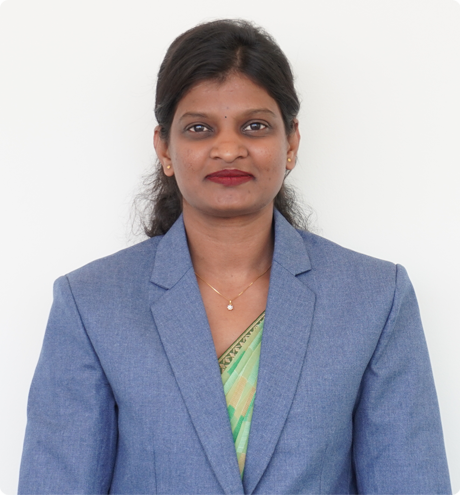
Prof. Divyashree H S
Assistant Professor & HoD
Qualification : B.E., M.Tech, (PhD)
Experience : 12 years
Specialization : Machine Learning
Email Id : divyashree.hs@brindavancollege.com
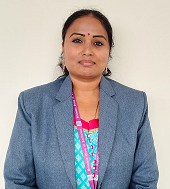
Prof. Padmavathi.R
Assistant Professor
Qualification : B.E., M.Tech
Experience : 11 years
Specialization : Power Electronics
Email Id : Padmavathir@brindavancollege.com
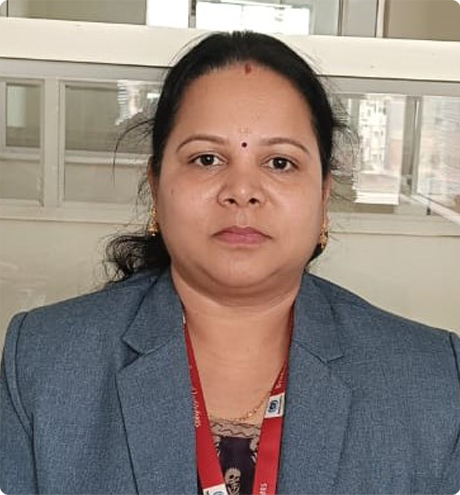
Prof. Poornima J
Assistant Professor
Qualification : B.E., M.Tech
Experience : 8 years
Specialization : Computer Science
Email Id : poornimaj@brindavancollege.com
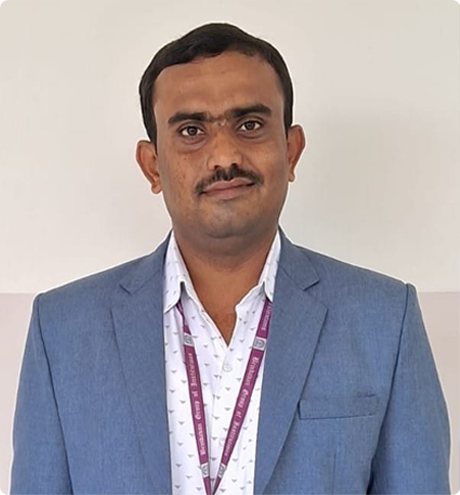
Prof. Arunkumar A S
Assistant Professor
Qualification : B.E., M.Tech
Experience : 7 years
Specialization : Computer Science & Engineering
Email Id : arun@brindavancollege.com
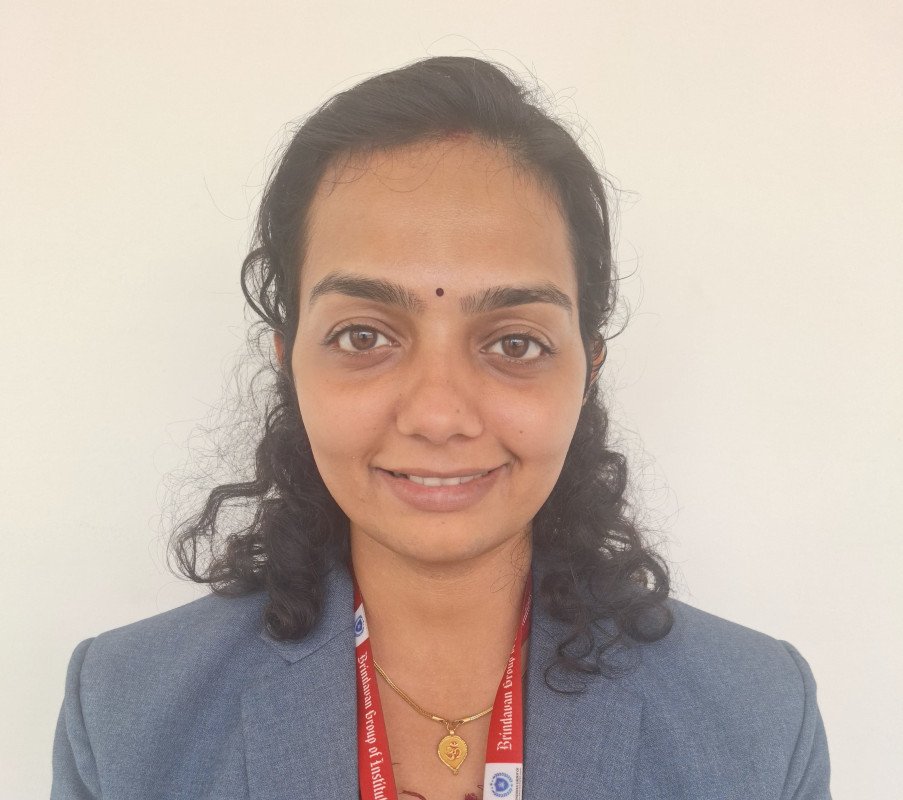
Prof. Arshitha P R
Assistant Professor
Qualification : B.E., M.Tech
Experience : 1.5 years
Email Id : arshithapr@brindavancollege.com
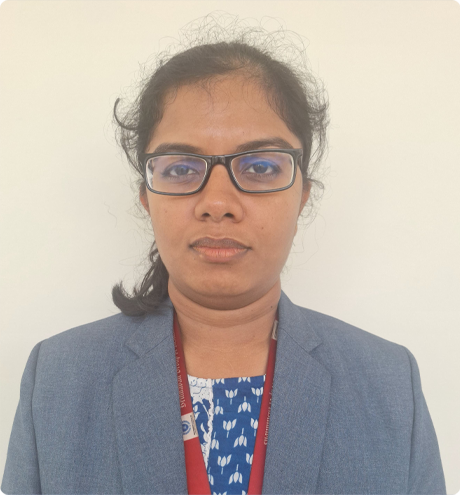
Prof. Bhuvana S
Assistant Professor
Qualification : B.E., M.Tech
Experience : 1 year
Specialization : Information Technology
Email Id : bhuvanas@brindavancollege.com

